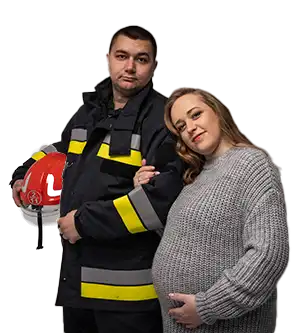
Childrens Cancer Clusters Close to Former AFFF Training Ground
Researchers are looking at patterns of childhood cancer in communities close to former PFAS-containing firefighting foam decommissioned fire training facilities
Wednesday, May 21, 2025 - The discovery of atypical pediatric cancer clusters in areas close to previous AFFF (aqueous film-forming foam) training locations has given emerging worries about the health effects of firefighting foam fresh importance. These include retired military outposts, firefighters' academies, and industrial locations where decades of training drills and emergency response activities used PFAS-based foams. Known for their environmental durability and ability to interfere with human biological systems, per- and polyfluoroalkyl compounds (PFAS) are included in AFFF. Although most of the focus thus far has been on adult occupational exposures, new studies are looking at how residual PFAS contamination in soil, groundwater, and air may be impacting children in nearby neighborhoods--especially those who were born or raised in these communities after the sites were closed. Some of the most alarming results reveal the prevalence of rare childhood illnesses like brain tumors and leukemia above expected levels. With increasing numbers of AFFF cancer lawsuits citing pediatric diagnosis as central evidence, families living near these sites have started contacting environmental health researchers and AFFF cancer attorneys to investigate possible links between long-term environmental exposure and their children's diseases.
Though no one case study has shown direct causation yet, trends are difficult to overlook. For instance, researchers looking at health records from areas within a two-mile radius of numerous closed fire training sites discovered noticeably higher cancer rates among children under the age of fifteen. Other than their proximity to the ancient training grounds, these areas lacked clear industrial sources of pollution. Groundwater, private wells, and even home dust tested for residual PFAS decades after foam use had stopped. Given that PFAS compounds do not break down readily, their presence in drinking water systems remains a big issue. Children are especially sensitive to chemical exposures because of their growing immune systems and lower body sizes; numerous studies also imply they may absorb and retain PFAS at higher rates than adults. Even with remediation initiatives at certain locations, many remain under-monitored with little to no continuous PFAS testing in surrounding homes. While legal lawyers in AFFF cancer cases contend that early indicators of harm to children should lead to a nationwide reevaluation of pollution hazards near these sites, some communities are now demanding more general public health inquiries. As more families search for explanations and responsibility, the legal movement around these cases is mounting.
These developing cancer clusters are likely to set off fresh waves of litigation, public health campaigning, and calls for environmental justice as the science on PFAS exposure and pediatric cancer develops. Stronger criteria for long-term monitoring of previous AFFF training sites may be expected in the future, especially in cases of their proximity to schools or residential areas. Legal pressure will probably compel public organizations as well as private companies to upgrade their policies for cleanup and support independent medical research. Transparency and caution will be crucial in safeguarding impacted families and stopping more damage until final answers are at hand.
 OnderLaw, LLC and The Overholt Law Firm, PC -
OnderLaw, LLC and The Overholt Law Firm, PC -